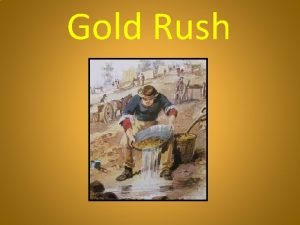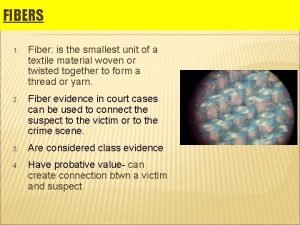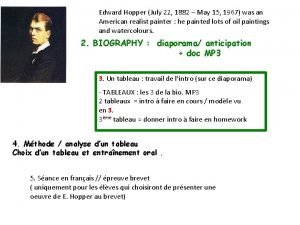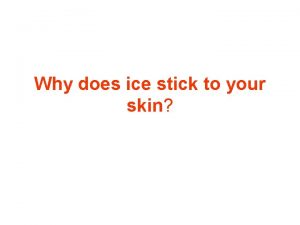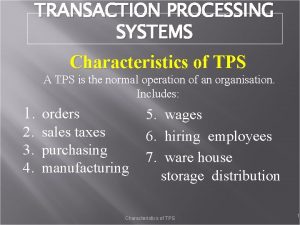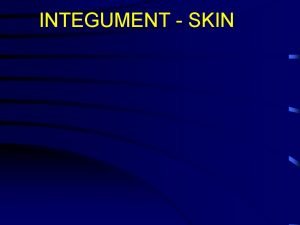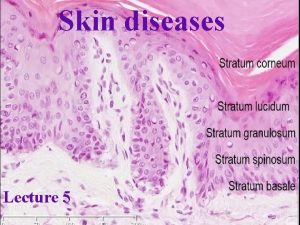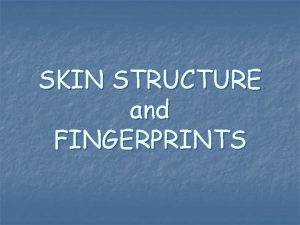J TPS Why did Edward Nortons skin start


















- Slides: 18



J – TPS • Why did Edward Norton’s skin start to burn off when Brad Pitt put the powder on his skin? • What was happening at the chemical level?

Today’s Learning Targets • 6. 2 – I can describe what an acid and base are using the idea of hydrogen ion donation and hydrogen ion accepting. • 6. 3 – I can characterize a compound as either a strong acid/base or weak acid/based on how much it dissociates.

Arrhenius Acids/Bases • An Arrhenius acid gives a H+ to a solution in an acid/base reaction – An Arrhenius acid will have a H in its chemical compound (e. g. HCl, HNO 3, H 2 SO 4, etc. ) • An Arrhenius base gives an OH- to a solution in an acid/base reaction – An Arrhenius base will have an OH in its chemical compound (e. g. Na. OH, KOH, Ca(OH)2, etc. ).

Bronsted-Lowry Acids/Bases • Refined Arrhenius’ theory of acids/bases • Bronsted-Lowry Acid – Donate (give) a H+ to solution • Bronsted-Lowry Acid – Accept (take) a H+ from solution. • All Arrhenius acids/bases are Bronsted-Lowry acids/bases, but not all Bronsted-Lowry acids/bases are Arrhenius acids/bases.

Class Example • Label the acid, base, and salt in the following reaction. Identify the acids and bases as either Arrhenius, Bronsted-Lowery, or both. HCl. O 3 + KOH H 2 O + KCl. O 3

My Turn • Label the acid, base, and salt in the following reaction. Identify the acids and bases as either Arrhenius, Bronsted-Lowery, or both. H 2 SO 4 + Rb. OH H 2 O + Rb. HSO 4

Strength of Acids/Bases • Acids/Bases can be classified as strong or weak based on how much it disassociates. • Disassociate – To break apart • Acids/Bases that completely dissociate are called strong acids/bases • Acids/Bases that only partially dissociate are called weak acids/bases – A solution of weak acid/base has some in the acid/base form and some in the broken apart form.

Strong Acids • • • HI HBr HCl. O 4 HCl. O 3 H 2 SO 4 You must memorize these!

Strong Bases • • Ca(OH)2 Sr(OH)2 Ba(OH)2 Na. OH KOH Rb. OH Cs. OH You must memorize these!

ALL ACIDS/BASES THAT ARE NOT ON THIS LIST ARE WEAK ACIDS/BASES

Summarize

Acid/Base Simulator • With a partner of your choice, take out a computer and the handout you picked up on the way in. • Complete the acid/base dissociation activity

Work Time Complete the worksheet you picked up when you came in.

Learning Log Assessment Rate yourself 1 – 4 on LTs 6. 1, 6. 2, and 6. 3

Exit Slip 1. What are two properties of an acid? 2. What is an Arrhenius acid? 3. What makes something a strong or weak base?

Learning Log Assessment Using your exit slip score, re-rate yourself on LTs 6. 1, 6. 2, and 6. 3
 How did edward hargraves start the gold rush
How did edward hargraves start the gold rush Why why why why
Why why why why Who founded georgia
Who founded georgia Why did the industrial revolution start in britain
Why did the industrial revolution start in britain What started the renaissance
What started the renaissance Why did europeans begin exploring
Why did europeans begin exploring What countries do cafod help
What countries do cafod help Stratum granulosum
Stratum granulosum Thin skin vs thick skin
Thin skin vs thick skin Facial steps milady
Facial steps milady Name the smallest unit of nylon
Name the smallest unit of nylon Site:slidetodoc.com
Site:slidetodoc.com Triage chart
Triage chart Don't ask why why why
Don't ask why why why When did edward hopper die
When did edward hopper die Wilhem wundt
Wilhem wundt Why does ice stick to your skin
Why does ice stick to your skin Explain skin analysis techniques and why they are important
Explain skin analysis techniques and why they are important When did ww2 start
When did ww2 start
